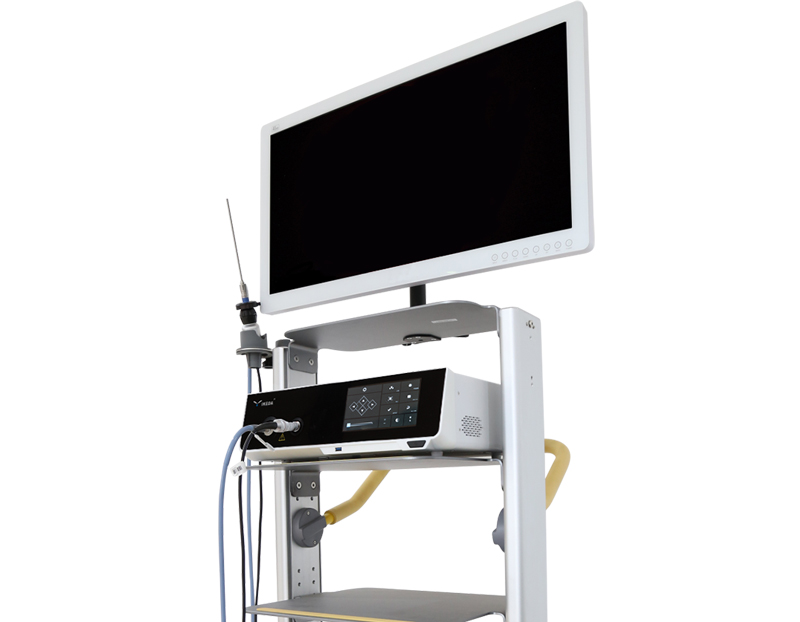Hysteroscopy is a new, minimally invasive gynecological diagnosis and treatment technology, a fiber light source endoscope used for intrauterine inspection and treatment, including hysteroscope, energy system, light source system, perfusion system and endoscope Imaging system; let's understand the principle and scope of application of hysteroscopy together.
The principle of hysteroscopy
Hysteroscope is a kind of endoscope. It enters the uterine cavity through the cervical canal through an optical lens. The cold light source can illuminate the uterine cavity so that it is brightly lit, and it is magnified by the optical lens, and the conduction is displayed on the monitoring screen. , The narrow uterine cavity has a clear view. In order to better observe the uterine cavity, the uterine cavity needs to be expanded and opened with pressurized saline, so the examination is carried out in liquid.
The scope of application of hysteroscopy: cervical leiomyoma, endometrial stromal sarcoma, endometrial polyps, endometriosis, dysfunctional uterine bleeding, uterine fibroids, intrauterine adhesions, uterine mediastinum, Family planning, infertility (fallopian tube dredging, intervention), etc.
Technical advantages of hysteroscopy:
Accurate measurement: High-tech minimally invasive diagnosis and treatment equipment, to achieve precise measurement of intrauterine lesions to the greatest extent;
Diagnosis is more accurate: High-tech fiber light source endoscope, including hysteroscope, energy system, light source system, perfusion system and imaging system, is more direct, accurate, reliable, reduces missed diagnosis, and significantly improves the diagnostic accuracy rate, not only can directly see Check the physiological and pathological changes in the uterus, and can also unblock occluded fallopian tubes, remove submucosal fibroids, or remove the endometrium that causes bleeding;
Surgery without laparotomy: A model of minimally invasive surgery, hysteroscopic surgery has the characteristics of less pain, less bleeding, short operation time, quick postoperative recovery, short hospital stay, fewer complications, and does not affect ovarian function. It preserves the uterus. Physiological integrity, little trauma.
Hysteroscopy can not only determine the location, size, appearance and scope of the lesion, but also make detailed observations of the tissue structure on the surface of the lesion, and obtain materials or locate and curettage under direct vision, which greatly improves the diagnosis of intrauterine diseases. Accuracy, update, development and make up for the shortcomings of traditional diagnosis and treatment methods. For most patients who are suitable for diagnostic dilatation and curettage, it is more reasonable and effective to perform hysteroscopy to determine the location of the lesion before biopsy or curettage. It can accurately determine the volume of the uterine cavity and whether the fallopian tube is unobstructed, and perform effective interventional examination and treatment for infertility caused by small uterus, naive uterus, uterine adhesion, fallopian tube obstruction, etc., quickly unblock the fallopian tube, and eliminate women The cause of infertility is Guojin's infertility examination and treatment instrument.
